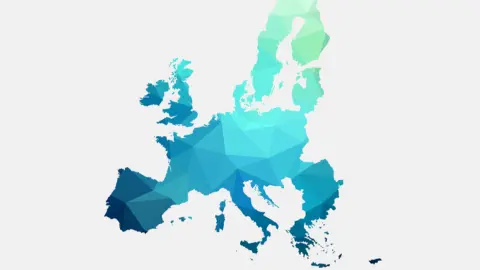Key events in developed markets next week
The Federal Reserve is likely to raise interest rates by 50bp next week amid more evidence that the economy is running hot. Another rate hike is also expected from the Bank of England though the situation here is a little more complicated…
US: Strong sales and production figures cement 50bp hikes
The Federal Reserve is widely expected to raise interest rates by 50bp at the forthcoming FOMC meeting and confirm that a further 50bp hike in July is the most likely path ahead. The near-term growth story is looking good. While household incomes are failing to keep pace with the increasing cost of living, consumers appear willing to run down some of their accumulated savings to maintain their lifestyles. The investment backdrop is also good while net trade is set to make a positive contribution to 2Q GDP growth, with a 4-4.5% annualised expansion firmly on the cards. At the same time, inflation is well above target and the Fed feels the need to get a grip on the situation, hence the prospect of 100bp of rate hikes over the next couple of months.
However, there is a debate as to what happens after July. Some officials want the Fed to continue with 50bp hikes to ensure inflation is brought under control, but this risks moving policy deeply into restrictive territory and heightening the chances of a recession. Others argue that there is already evidence of the growth outlook weakening and inflation pressures tentatively softening, which could justify a pause in September. Given this growing debate, we expect to see only modest changes to the Fed's forecast profile for growth, inflation, and rates. We remain optimistic about near-term growth and we also think inflation will be sticky given ongoing geopolitical strife, supply chain issues, and labour market shortages. As such, a September hike is still our base case, but there is a growing chance the Bank switches to 25bp moves at that meeting and beyond. We expect the Fed funds rate to peak at around 3% in early 2023.
In terms of the data, the US highlights will be retail sales and industrial production. Retail sales headline growth will be depressed by weaker auto sales in May, but there should be decent strength in other parts of the report given strong readings for people movement and firm chain store sales numbers that leave us with a positive figure overall. Industrial production should also be firm with increasing oil and gas drilling adding to a strong manufacturing sector performance.
Bank of England set to resist temptation of a 50bp hike
The Bank of England will almost certainly hike rates again on Thursday, in what would be the fifth consecutive rate rise since December. But despite a growing number of global central banks opting for more aggressive rate hikes, we expect the committee as a whole to vote in favour of a more gradual 25bp move. Admittedly, we are likely to see at least three, possibly four, officials vote for a 50bp move, as was the case in May. But the committee is clearly divided, and we know that some members not only were nervous about faster rate hikes, but actually proposed scrapping the forward guidance that more rate hikes will be needed.
The wild card scenario for Thursday is therefore that we get a three-way vote split – that is some officials opting for no change, some for 50bp, and an overall majority in favour of 25bp. This would be unusual, and a three-way vote has only happened six times since 1997 and not since the financial crisis. We also suspect the announcement of a new government spending package since the May meeting will probably tempt those wavering committee members to continue backing a rate hike for the time being.
But at some point, we are likely to see further cracks in the MPC’s resolve on tightening. We expect three more hikes in quick succession, taking Bank Rate to 1.75% in the autumn. But markets, which are now pricing a terminal rate above 3% next summer, are still likely overestimating the pace of hikes.
It’s also a busy week for UK data, starting with April GDP which we think was probably flat on the month. The ending of free Covid testing will have weighed heavily on health output, though this will probably be largely offset by gains elsewhere. We still expect overall second-quarter growth to come in negative, largely because of an extra Bank holiday last week, but also because of a reduction in consumer spending. Expect to see more signs of that in Friday’s retail sales figures, which are also being hit by the rebalancing of spending away from goods and back towards services, which are out of scope of the retail numbers. Tuesday’s jobs numbers will highlight the issue of worker shortages, which have helped lift wage growth.
Switzerland: Policy rate to remain unchanged
The Swiss National Bank meets next week in a dramatically different context to its last meeting in March. After years of low inflation and even deflation, Swiss inflation reached 2.9% in May, its highest level since 2008. While this is still much lower than inflation in other developed countries, it is clearly above the SNB's 0 to 2% inflation target. Moreover, we have sensed a change in tone from the SNB recently, which is now focusing much more on the real exchange rate, which is heavily impacted by the inflation differential between Switzerland and other countries (in May, headline inflation was 2.9% in Switzerland compared to 8.1% in the eurozone). The increase in the inflation differential is pushing the real exchange rate of the Swiss franc down, which is equivalent to an easing of monetary policy and is not considered desirable by the SNB in the current context of above-target inflation. Consequently, the SNB is prepared to let the Swiss franc appreciate further in nominal terms to counterbalance the inflation differential and to stabilise the real exchange rate.
For monetary policy, this implies that the SNB is likely to seize on the ECB's rate hike to also embark on a series of rate hikes, albeit with a delay. With the ECB having de facto announced a first rate hike for July and a second one to come in September, the SNB is likely to follow suit. We expect the SNB to keep its rate unchanged at its June meeting, but to hint at future rate hikes as early as September. We expect a first hike of 25 basis points at the SNB meeting on 22 September, and a second in December. The hikes could then continue into 2023. Moreover, although this is not our base case, we cannot rule out a surprise rate hike on June 16.
Developed Markets Economic Calendar

This publication has been prepared by ING solely for information purposes irrespective of a particular user's means, financial situation or investment objectives. The information does not constitute investment recommendation, and nor is it investment, legal or tax advice or an offer or solicitation to purchase or sell any financial instrument. Read more
Download
Download article
10 June 2022
Our view on next week’s key events This bundle contains 3 Articles
